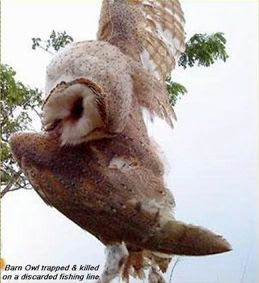Yesterday, a small team help test out the protocols for the Project on an abandoned net at Tanah Merah.
The Project is led by Zeehan (front left) and me. We are heartened by the support of so many intrepid volunteers who turned out despite the mizzle (miserable drizzle).
What are driftnets?
More properly called gill nets, these are very long nets made up of plastic (non-biodegradable) filaments that are nearly transparent and entangle all kinds of animals large and small. They may be set up near the high shore, among mangroves or hung from floats and allowed to drift in the water near reefs.
 |
| Laying a driftnet across the mangroves at Berlayar Creek. |
Why are driftnets abandoned?
These nets may come lose and float away. Or simply left behind or dumped on the shore after use.
Why are abandoned driftnets a threat?
The abandoned nets continue to trap animals. Animals that die in the nets attract scavengers such as crabs, that in turn get trapped. Air breathing marine animals may get trapped in these nets and drown. These include dugongs, sea turtles, otters and snakes.As the plastic filaments are non-biodegradable, the killing can go on for a long time.
What animals are hurt in abandoned driftnets?
Here are some seen in the past.
 |
| Shark and other large fishes in a driftnet on Cyrene Reef. |
| Living lobster trapped in abandoned driftnet on St. John's Island. |
| Releasing horseshoe crabs trapped in an abandoned driftnet on Chek Jawa. This photo was used by the Prime Minister in his National Day speech in 2010. |
 |
| Crabs in an abandoned fish trap on Pulau Sekudu. |
| Releasing a young Malayan water monitor from an abandoned driftnet, during a clean up effort at Pulau Sekudu. |
 |
| Little Heron killed by a fishing line, from the Bird Ecology Study Group blog. |
 |
| Barn owl entangled in a fishing line, from the Bird Ecology Study Group blog. |
More on the Project Driftnet blog and facebook page, and how you can help with this Project.
After dealing with the driftnet, we had a quick look at the other lagoon at Tanah Merah. The Tape seagrass (Enhalus acoroides) there was blooming again! These are the female flowers, freshly blooming.
We also saw rafts of the tiny male flowers.
I didn't have time to do a proper check on these shores which continue to be impacted by crude oil which still remains on the shore. This will have to wait for another low tide. So much to do and too few low tides




